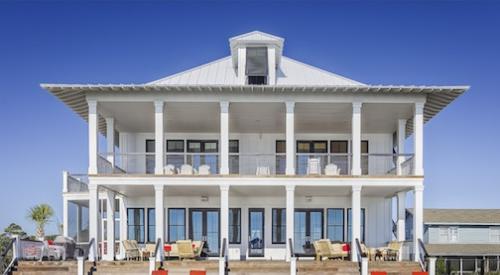It takes more than an eye-catching exterior to be chosen as a Best In American Living Award (BALA) winner, according to National Association of Home Builders’ Joe Molinaro, who heads the annual awards program, co-sponsored by NAHB and Professional Builder.
BALA, the country’s foremost design competition for residential housing, judges entries not only on appearance, but also scrutinizes interior floor plans, how the project relates to its own local market, and the construction techniques and materials used to build it.
“Buyers are getting more and more sophisticated these days, and they recognize good design when they see it,” says Molinaro, manager of Land Development Services for NAHB. “In order to be successful, builders must recognize this market evolution and accommodate their design strategies to it.”
With awards available in 19 categories, including single-family, custom, rental, affordable and overall community, BALA recognizes outstanding achievement by builders and architects in all avenues of residential housing. “Good design is not limited to high-priced, custom homes,” says Molinaro, “We’ve developed this program so that even the simplest, most affordable homes can receive an award.”
Why Is a Design Award Important?
So what advantages does a BALA award offer builders today, particularly to those who view the residential construction process with an eye toward the bottom line and operate with a “build what sells” mentality?
Builders and architects benefit from the prestige of being a BALA recipient in a number of ways, according to Molinaro, including national name recognition, increased public approval for future projects, and improved awareness of buyer’s new home desires.
“The BALA competition really educates the building community on the tenets of good product design by holding up examples to study,” says three-time judge Georganne Derick, an interior merchandiser and appointee to NAHB’s National Design Committee.
“It is critical that builders recognize how important good design is to their own acceptance in the marketplace,” says Derick. “Sometimes they need to be reminded that people actually have to ‘live’ in the homes they build. It is important to consider traffic patterns, where doors are placed, and how convenient it is to access the kitchen when developing new product.” Past BALA award-winner, architect Dominick Tringali, who’s Bloomfield Hills, Mich.-based architectural firm is responsible for an annual average of 500 projects, agrees with this assessment.Tringali says that winning a BALA award links the builder or architect with a quality product in the public’s perception and reflects well on their work. “Clients mention my BALA awards when promoting their new projects or communities which feature my designs.”
Production home builder Jim Esperson, of William Ryan Homes, is most interested in the secrets to success BALA offers builders, namely, how it can help builders sell more houses and, ultimately, make more money. “The BALA award is for excellence in design,” says Esperson,
“Although it is not necessarily for the best-selling homes in America, it does offer invaluable lessons for a builder on how to improve sales by building better-designed homes.” And, finally, a pat on the back from your friends is always a boost. “Winning a BALA award,” says judge Wendy Ney Manley, of Southdown Homes, “is like receiving a seal of approval from your peers. It’s an important endorsement for a builder from others in the field.”
There are benefits from simply entering the competition, says Molinaro. “It takes a lot of effort to put together a BALA entry. It forces the builder or architect to focus on the design as well as the whole thought process behind it. This may have a positive effect on how they approach the next project.”
The BALA Judging Process
The formidable task of sorting through the multitude of BALA entries from across the country (In 1999 there were 422.) is actually a carefully choreographed three-day event. Platinum, gold and silver award winners are identified in each of the judging categories. In addition “Best In Region” awards are selected for projects in nine identified census regions.
Initially, the BALA judges, who are divided into two groups, consider each project on their own. Working quickly from a score sheet, they rate each project on such things as curb appeal, interior architecture, special features, livability and sales.
The top scorers are identified for closer inspection and move on to the next phase of the judging process. Here, the judges get together with their group to evaluate the top choices in each category. Finally, all of the judges come together as a single, vocal group to discuss the merits of the top choices, finally coming to a joint decision on the winners. Although it may seem subjective, the process works well to successfully single out the country’s best design projects, according to Molinaro. “There really is no way to scientifically measure good design,” he says. “That is why we work hard to get a good cross-section of judges representing a variety of housing-related disciplines.”
After the winners are announced at the 56th NAHB International Builders Show in Dallas, the NAHB and Professional Builder develops a presentation of the winning entries that is featured at local HBAs around the country, according to Derick. “This is a great tool for builders because it demonstrates clearly why winners are winners, identifies new trends, and shows them how to apply new ideas locally. Builders take away lots of ideas they can use for their own product.”










